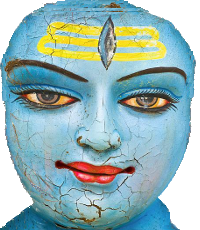The Kama Sutra

Foreigners often regard Indian culture as “spiritual,” but many of its cultural practices, such as meditation and yoga, concern the body rather than the soul. This is true also of the wisdom contained in the Kama Sutra which is known as a sex manual, but which above all is a manual on how to lead a complete and satisfying human life. It discusses the nature of love, family life, pleasure and desire, but also how to make oneself attractive to others and how to court members of the opposite sex.
The author of the Kama Sutra, Vatsyayana, was a philosopher who lived in the second or third century BCE, but next to nothing is known about him. Clearly sex is important, he tells us, but other things are important too. It is when you are young that you should seek pleasure but as the years pass you should concentrate on living virtuously in order to escape the cycle of endless rebirths. Yet, sexuality can be given a religious interpretation too. A man and a woman in a close embrace symbolizes moksa, “liberation,” the final release from the dualities which characterizes human life. If nothing else, this interpretation provides an excuse for reading the book.
The teaching conveyed by the Kama Sutra is depicted in the thousands of statues that decorate the temples in Khajuraho, in Madhya Pradesh in central India. The statues show men and women in various sexual positions but also scenes from everyday life – women putting on makeup, musicians making music and farmers going about their daily chores. Sexuality, the collection of statues tell us, is a regular part of human life.
Today the production and distribution of pornography is a punishable crime in India. Bollywood, the Indian film industry, excels in evocative dance numbers, but has traditionally refrained from taking the clothes off actors and actresses. Prostitution as such is legal in the country, but brothels and pimping are not. India is estimated to have over half a million prostitutes. Trafficking of young girls is an often reported problem, in particular among members of vulnerable minority groups.
External links
- “Ciocolata Kamasutra, înlocuită cu Moş Crăciun”
- “Kamasutra Reinterpreted for Today’s Lovers”
- “The Kama Sutra for Cats”
- History of India, “The Kama Sutra of Vatsayayana”
- IMDB, “Kamasutra 3D”
- Madras Courier, “The Kamasutra Code and the Muslim Scholar”
- Project Gutenberg, “The Kama Sutra of Vatsyayana”
- Unesco, “Khajuraho Group of Monuments”

